Sustainable Pig Farming in Uganda: Biogas, Biofertilizer, and Environmental Benefits
Environmental sustainability and economic profitability often seem at odds in agricultural development, but HOG4Education’s innovative approach proves these goals can work together. Through integrated biogas and biofertilizer production, pig farmers in Eastern Uganda are reducing environmental impact while creating additional income streams worth up to 300,000 UGX monthly per farm.
The Biogas Production Process:
Collection and Preparation: Fresh pig waste is mixed with water in a 1:1 ratio to create slurry with optimal consistency for decomposition.
Anaerobic Digestion: The slurry enters a sealed digester where bacteria break down organic matter without oxygen, producing biogas over 15-30 days.
Gas Capture and Storage: Generated biogas is captured in storage tanks and distributed through pipes to cooking stoves and lighting systems.
Slurry Removal: Remaining liquid becomes high-quality biofertilizer rich in nitrogen, phosphorus, and potassium essential for crop growth.
A typical 10-pig operation produces enough waste to generate 4-6 hours of cooking gas daily, equivalent to 2-3kg of firewood. This production meets most household cooking needs while reducing dependence on expensive commercial fuels.
Understanding Uganda's Environmental Challenges in Agriculture
Traditional pig farming in Uganda often creates environmental problems that threaten long-term sustainability. Improper waste disposal contaminates water sources, generates greenhouse gases, and creates health hazards for communities. As pig farming expands to meet growing demand, these environmental challenges require urgent attention.
Rural communities face particular challenges with energy access and soil degradation. Over 85% of rural households rely on firewood and charcoal for cooking, contributing to deforestation and indoor air pollution. Meanwhile, continuous cultivation without proper soil management depletes nutrients, reducing crop yields and threatening food security.
HOG4Education recognizes that sustainable farming practices address both environmental protection and economic development simultaneously. Our integrated approach transforms pig waste from a problem into a solution, creating cleaner communities while generating additional farmer income.
The Science Behind Biogas Production from Pig Waste
Biogas production harnesses the natural decomposition process of organic matter to generate clean energy. When pig waste decomposes in oxygen-free environments, bacteria break down organic materials and produce methane, carbon dioxide, and other gases that can be captured and used for cooking and lighting.
The Biogas Production Process:
Collection and Preparation: Fresh pig waste is mixed with water in a 1:1 ratio to create slurry with optimal consistency for decomposition.
Anaerobic Digestion: The slurry enters a sealed digester where bacteria break down organic matter without oxygen, producing biogas over 15-30 days.
Gas Capture and Storage: Generated biogas is captured in storage tanks and distributed through pipes to cooking stoves and lighting systems.
Slurry Removal: Remaining liquid becomes high-quality biofertilizer rich in nitrogen, phosphorus, and potassium essential for crop growth.
A typical 10-pig operation produces enough waste to generate 4-6 hours of cooking gas daily, equivalent to 2-3kg of firewood. This production meets most household cooking needs while reducing dependence on expensive commercial fuels.
Case Study: Robert Eganu’s Integrated Farming Success
Robert Eganu’s transformation demonstrates the powerful impact of integrated sustainable farming. When Robert joined HOG4Education’s program in 2023, his family spent over 80,000 UGX monthly on firewood and charcoal while struggling with poor soil fertility on their small farm.
Traditional Challenges (Before HOG4Education):
- Monthly energy costs: 80,000 UGX for firewood and charcoal
- Declining crop yields due to poor soil fertility
- Pig waste management problems creating odors and contamination
- Limited income from basic pig farming operations
Sustainable Solutions Implementation: Robert learned to construct and operate a 15-cubic-meter biogas digester using local materials and community labor. The investment of 800,000 UGX seemed substantial initially, but HOG4Education’s financial planning showed clear benefits.
Biogas System Results (After 6 Months):
- Eliminated monthly energy costs, saving 80,000 UGX
- Generated 5 hours daily cooking gas for family needs
- Produced excess gas for small-scale income generation
- Completely eliminated odors and waste management problems
Biofertilizer Production Benefits:
- Monthly production: 500 liters high-quality liquid fertilizer
- Applied to 2-acre maize and vegetable plot
- Increased crop yields by 40% compared to previous seasons
- Generated additional 150,000 UGX monthly from improved harvests
Additional Income Streams:
- Sells excess biogas to 3 neighboring families: 45,000 UGX monthly
- Sells biofertilizer to local farmers: 75,000 UGX monthly
- Improved crop sales from better yields: 150,000 UGX monthly
- Total additional monthly income: 270,000 UGX
“The biogas system paid for itself in less than 6 months,” Robert explains. “Now it generates more income than my original pig farming operation while solving environmental problems and improving our family’s health.”
Biofertilizer: Transforming Waste into Agricultural Gold
The liquid remaining after biogas production, called biofertilizer or bio-slurry, represents one of agriculture’s most valuable resources. This nutrient-rich material contains balanced nitrogen, phosphorus, and potassium plus essential micronutrients often missing from commercial fertilizers.
Biofertilizer Composition and Benefits:
- Nitrogen content: 1.5-2.5% promoting vigorous plant growth
- Phosphorus content: 1.0-1.8% supporting root development and flowering
- Potassium content: 0.8-1.2% improving disease resistance and fruit quality
- Organic matter: 8-12% improving soil structure and water retention
- pH balance: 6.5-7.5 optimal for most crop varieties
Application Methods and Best Practices:
Direct Application: Apply liquid biofertilizer directly to soil around plants, typically 2-3 liters per square meter for vegetables and 4-5 liters for maize.
Foliar Spray: Dilute biofertilizer 1:3 with water for foliar application, providing immediate nutrient uptake through leaves.
Compost Enhancement: Mix biofertilizer with organic matter to create super-rich compost for long-term soil improvement.
Timing and Frequency: Apply biofertilizer every 2-3 weeks during growing seasons, with heavier applications before planting and flowering periods.
Economic Analysis: Sustainable Farming Profitability
HOG4Education’s economic analysis demonstrates clear financial benefits of sustainable farming practices that extend far beyond environmental protection.
Initial Investment Requirements:
- 15-cubic-meter biogas digester: 800,000-1,200,000 UGX
- Installation and setup costs: 200,000-300,000 UGX
- Training and technical support: Included in HOG4Education program
- Total initial investment: 1,000,000-1,500,000 UGX
Monthly Savings and Income:
- Energy cost savings: 80,000-120,000 UGX
- Improved crop income: 100,000-200,000 UGX
- Biofertilizer sales: 50,000-100,000 UGX
- Excess biogas sales: 30,000-60,000 UGX
- Total monthly benefit: 260,000-480,000 UGX
Return on Investment Timeline:
- Payback period: 4-6 months
- Annual net benefit: 3,000,000-5,500,000 UGX
- 5-year total return: 15,000,000-25,000,000 UGX
These calculations demonstrate that sustainable farming practices generate substantial returns while creating positive environmental impact.
Environmental Impact and Community Benefits
Sustainable pig farming creates measurable environmental improvements that benefit entire communities:
Greenhouse Gas Reduction: Proper biogas capture prevents methane emissions that would otherwise contribute to climate change. Each farm reduces equivalent CO2 emissions by 8-12 tons annually.
Water Quality Protection: Contained waste management prevents contamination of groundwater and surface water sources, protecting community health and aquatic ecosystems.
Deforestation Prevention: Biogas production reduces firewood consumption by 2-3 tons annually per household, helping preserve local forests and wildlife habitats.
Air Quality Improvement: Replacing firewood with clean biogas eliminates indoor air pollution, reducing respiratory problems especially among women and children.
Soil Health Enhancement: Biofertilizer application improves soil organic matter, water retention, and nutrient cycling, supporting long-term agricultural productivity.
HOG4Education’s Integrated Sustainability Program
HOG4Education provides comprehensive support for farmers transitioning to sustainable practices through our specialized program components:
Technical Training: Intensive courses covering biogas system design, construction, operation, and maintenance using locally available materials and skills.
Construction Support: Expert guidance and community labor mobilization for biogas digester construction, ensuring proper installation and optimal performance.
Ongoing Maintenance: Regular technical support and troubleshooting assistance to maintain system efficiency and resolve operational challenges.
Market Development: Assistance connecting farmers with buyers for excess biogas and biofertilizer, creating additional income opportunities.
Community Networks: Facilitation of farmer groups for knowledge sharing, bulk purchasing of materials, and collaborative problem-solving.
Financial Planning: Detailed economic analysis and business planning to optimize returns from integrated sustainable farming operations.
Success Story: Grace Auma’s Women’s Cooperative
Grace Auma leads a 12-member women’s cooperative in Kumi Municipality that has revolutionized sustainable farming in their community. When the group joined HOG4Education’s program in early 2024, they faced common challenges: high energy costs, poor soil fertility, and limited income opportunities.
Collective Action Approach: Rather than individual biogas systems, the cooperative constructed a community-scale digester serving multiple households while creating shared income opportunities.
Implementation and Results:
- Built 25-cubic-meter community biogas system: 1,800,000 UGX investment
- Serves 12 households with cooking gas: 960,000 UGX monthly savings
- Produces 800 liters monthly biofertilizer: 200,000 UGX sales income
- Operates gas refilling service for neighbors: 180,000 UGX monthly income
- Combined monthly benefit: 1,340,000 UGX shared among members
“Working together made sustainability affordable and profitable,” Grace explains. “We shared costs, knowledge, and benefits. Now our entire community is cleaner and more prosperous.”
The cooperative has inspired similar groups throughout the region, demonstrating how collective action amplifies sustainability benefits.
Overcoming Common Challenges in Sustainable Farming
Farmers adopting sustainable practices face predictable challenges that HOG4Education helps address through proven solutions:
Technical Knowledge Gaps: Comprehensive training ensures farmers understand biogas production principles, maintenance requirements, and troubleshooting techniques.
Initial Capital Requirements: Flexible financing options and community labor mobilization reduce upfront costs while teaching construction skills.
System Maintenance: Regular follow-up support and farmer networks provide ongoing technical assistance and peer problem-solving.
Market Development: HOG4Education’s buyer networks and marketing support ensure farmers can sell excess biogas and biofertilizer profitably.
Quality Control: Training in proper waste management and system operation ensures consistent biogas production and high-quality biofertilizer output.
Integration with Crop Production Systems
Sustainable pig farming integrates seamlessly with crop production to create highly efficient farming systems:
Nutrient Cycling: Crop residues feed pigs, pig waste produces biogas and fertilizer, biofertilizer enhances crop production in continuous beneficial cycles.
Land Use Optimization: Intensive pig farming requires minimal land while biofertilizer application maximizes productivity of existing cropland.
Income Diversification: Multiple income streams from pigs, biogas, biofertilizer, and improved crops reduce financial risks and increase overall profitability.
Labor Efficiency: Integrated systems use labor more efficiently throughout the year, providing consistent employment and income opportunities.
Future Developments in Sustainable Pig Farming
HOG4Education continues developing innovative approaches to enhance sustainability and profitability:
Advanced Biogas Technologies: Research into improved digester designs and gas purification systems to increase efficiency and expand applications.
Value-Added Products: Development of processed biofertilizer products, biogas appliances, and related technologies creating additional income opportunities.
Carbon Credit Programs: Exploration of carbon credit markets that could provide additional income for farmers implementing sustainable practices.
Regional Expansion: Scaling successful models to reach more communities throughout Uganda and neighboring countries.
Technology Integration: Incorporating digital monitoring systems and mobile applications to optimize biogas production and marketing.
Getting Started with Sustainable Pig Farming
Farmers interested in sustainable practices can begin immediately with HOG4Education’s comprehensive program:
Assessment and Planning: Evaluation of current operations and site conditions to design optimal biogas and biofertilizer systems.
Training and Capacity Building: Intensive technical training covering all aspects of sustainable pig farming, system construction, and operation.
Implementation Support: Hands-on assistance with system construction, installation, and initial operation to ensure successful launch.
Market Linkage Development: Connection with buyers for excess biogas and biofertilizer to maximize income opportunities.
Ongoing Technical Support: Continued assistance with maintenance, troubleshooting, and system optimization throughout the operation.
Community Network Participation: Integration into farmer networks for peer learning, collaborative problem-solving, and knowledge sharing.
Building a Sustainable Agricultural Future
Sustainable pig farming represents more than environmental protection – it demonstrates how farmers can profit while preserving natural resources for future generations. HOG4Education’s integrated approach proves that sustainability and profitability work together to create lasting positive change.
Contact HOG4Education at +256787498143 or visit our demonstration farms in Kumi Municipality to see sustainable farming in action. Join the growing movement of farmers building profitable, environmentally responsible agricultural enterprises.
The future of farming is sustainable, profitable, and within your reach. Take the first step toward environmental stewardship and economic prosperity with HOG4Education’s proven sustainable farming program.
Learn more about our comprehensive training programs and farmer success stories in our other blog posts. Follow HOG4Education for regular updates on sustainable farming innovations and opportunities.

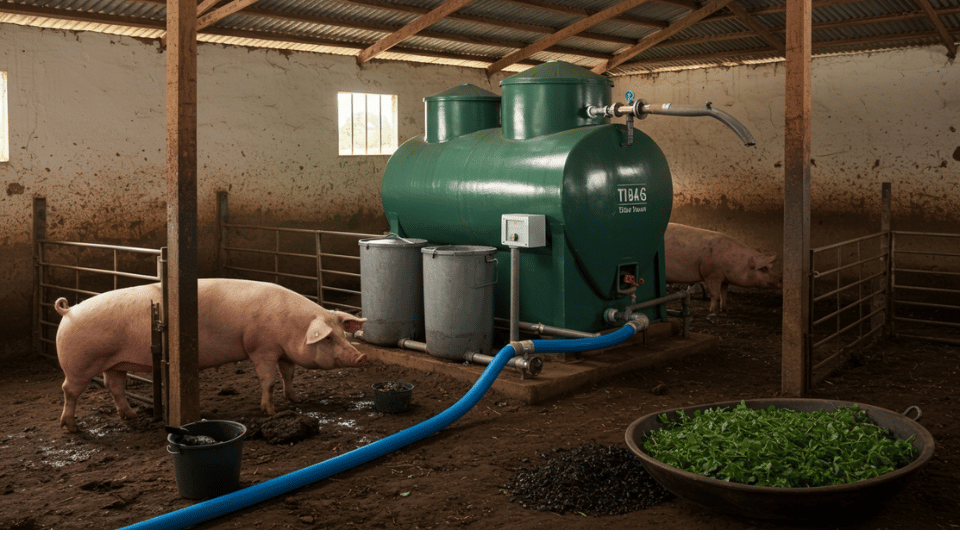
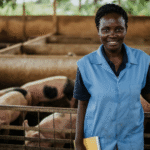
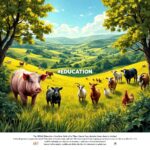
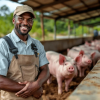

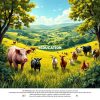
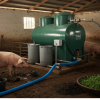
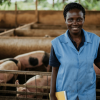

2 Comments
Adam Gordon
Thanks for this great post!
Mia Queen
Thanks for sharing 🙂